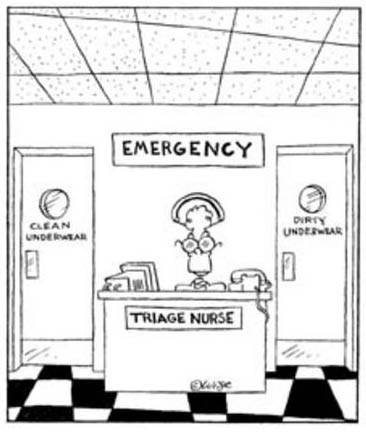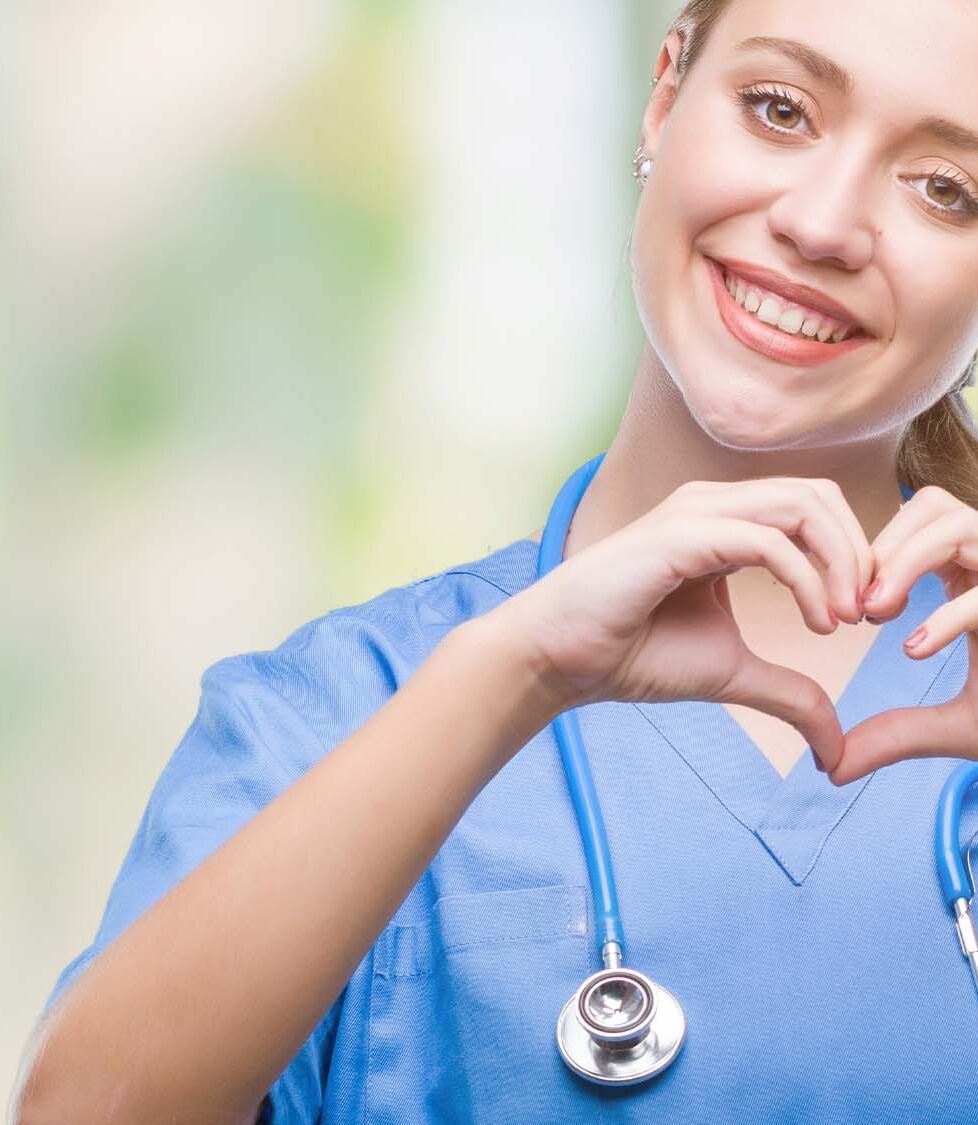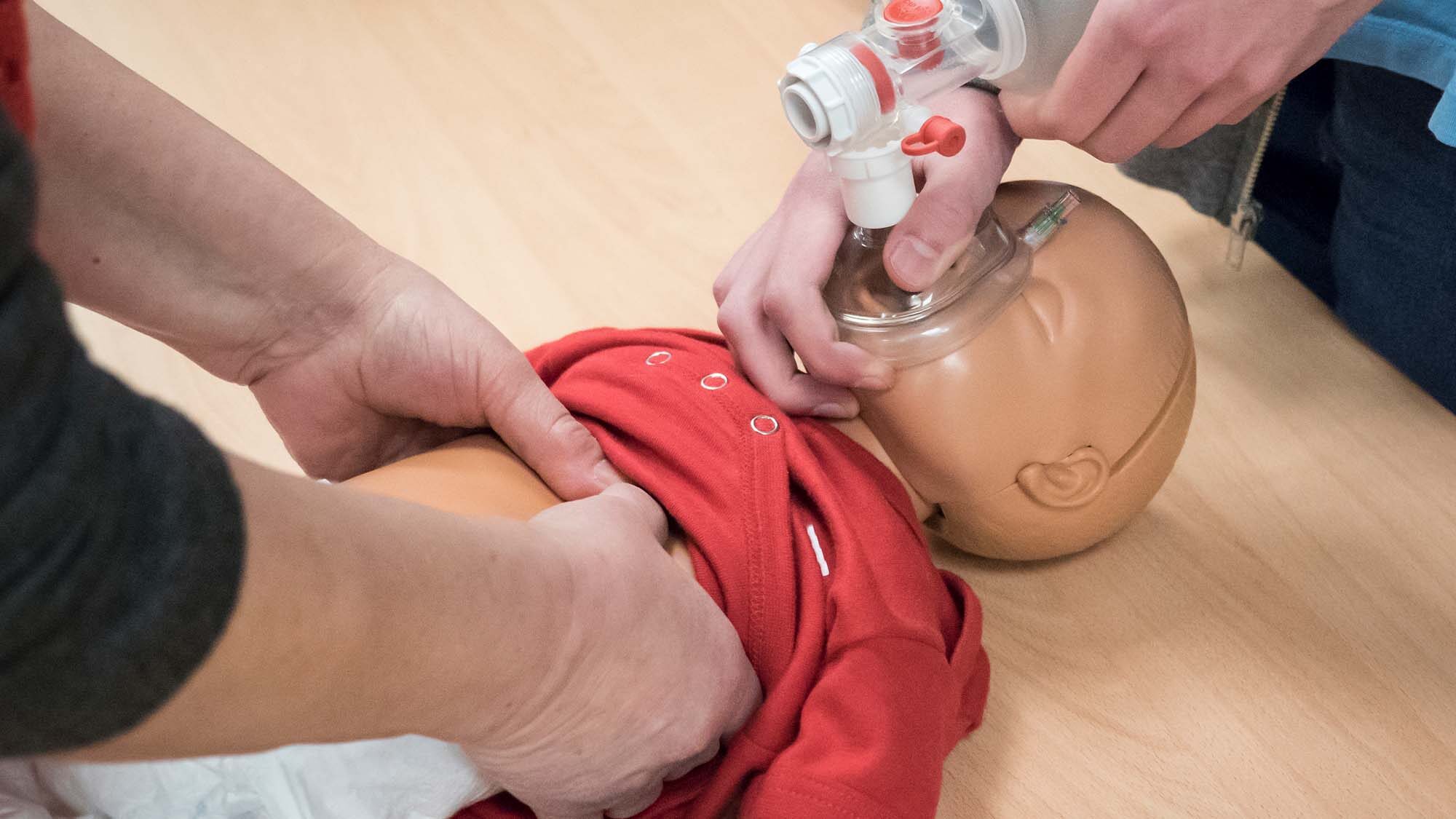TFC Phillipino Channel to join us at the
Grand Opening
of Critical Care Training Center!
September 12 from 11a.m. – 1p.m!
Food! Great gifts! 25% off registration for Critical Care courses–See more details below.
Critical Care Training Center is a training site for the American Heart Association, Emergency Care and Safety Institute and American Safety and Health Institute.
Now That’s Funny!
 Submit your funny cartoon, picture or story for a chance to win a $20 gift certificate if your image is chosen for our next newsletter. Thank you to Maria Cerbantes RN for this good one here!Submit your funny to support@acls123.com by Friday, September 14th for the next issue of our newsletter.
Submit your funny cartoon, picture or story for a chance to win a $20 gift certificate if your image is chosen for our next newsletter. Thank you to Maria Cerbantes RN for this good one here!Submit your funny to support@acls123.com by Friday, September 14th for the next issue of our newsletter.New this week: EDUCATION
Every week we’ll be taking an in-depth look at a medical issue or health syndrome. This week we bring you Sick Sinus Syndrome; over the next few weeks we’ll bring you topics like
EDUCATION
Sick Sinus Syndrome
Definition
Sick sinus syndrome is the name for a group of heart rhythm problems (arrhythmias) in which the sinus node — the heart’s natural pacemaker — doesn’t work properly. The sinus node is an area of specialized cells in the upper right chamber of the heart that controls the rhythm of your heart. Normally, the sinus node produces a steady pace of regular electrical impulses. In sick sinus syndrome, these signals are abnormally paced. A person with sick sinus syndrome may have heart rhythms that are too fast, too slow, punctuated by long pauses — or an alternating combination of all of these rhythm problems. Sick sinus syndrome is relatively uncommon, but the risk of developing sick sinus syndrome increases with age. Many people with sick sinus syndrome eventually need a pacemaker to keep the heart in a regular rhythm. Symptoms Most people with sick sinus syndrome initially have few or no symptoms. In some cases, symptoms may come and go. When they do occur, sick sinus syndrome symptoms may include:
- Slower than normal pulse (bradycardia)
- Fatigue
- Dizziness or lightheadedness
- Fainting or near fainting
- Shortness of breath
- Chest pains
- Interrupted sleeping
- Confusion or difficulty remembering things
- A sensation of rapid, fluttering heartbeats (palpitations)
Many of these signs and symptoms are caused by reduced blood flow to the brain when the heart beats too fast or too slowly.
For more on the sick sinus syndrom topics, see the full article here.
- When to see a doctor
- Causes
- What makes the sinus node misfire?
- Risk Factors
- Complications
- Tests and diagnosis
- Electrocardiogram
For more on testing, medication and treatments of Sick Sinus Syndrome . . . Read the entire article here.
EAT
50 foods that define the Philippines
By Maida Pineda, Candice Lopez-Quimpo
 From adobo to turon — the best bites to be savored around the archipelago
From adobo to turon — the best bites to be savored around the archipelago
Filipino food may not be as famous as that of its Thai and Vietnamese neighbors. But with more than 7,000 islands and a colorful history, this archipelago has some delicious dishes of its own.
Blessed with an abundance of seafood, tropical fruits and creative cooks, there’s more to Filipino dishes than the mind-boggling balut (duck embryo).
You just have to know where to find them and how to eat them.
Adobo — common, but not ordinary.
No list of Filipino food would be complete without adobo.
A ubiquitous dish in every household in the Philippines, it’s Mexican in origin, but Filipinos found that cooking meat (often chicken and pork) in vinegar, salt, garlic, pepper, soy sauce and other spices, was a practical way to preserve meat without refrigeration.
This cooking style can be applied to different meats or even seafood. Sample it in a Filipino home or the garlicky version of the lamb adobo at Abe.
Chicken inasal
Yes, it’s grilled chicken. But in Bacolod, this is no ordinary grilled chicken.
The meat is marinated in lemongrass, calamansi, salt, pepper and garlic and brushed with achuete (annatto seeds) oil.
Every part of the chicken is grilled here from the paa (drumstick), pecho (breast), baticulon (gizzard), atay (liver), pakpak (wings) and corazon (heart). It must be eaten with a generous serving of garlic rice, with some of the orange oil used to marinade the chicken poured over the rice.
Go chicken crazy at Manukan Country where there is a row of authentic Inasal restaurants. Get all 50 dishes here.

1. USB Drive 4G
2. Lunch Bag
3. Travel Coffee Mug
4. Iphone speaker systemWe will be raffeling following items:
1. FREE ACLS Class (valued at $175.00)
2. TWO FREE BLS classes (valued at $45.00 each)
3. $100.00 Critical Care Training Center gift certificates good towards all classes and books
4. $50.00 Critical Care Training Center gift certificateIn addition to all this JUST FOR THIS DAY ONLY everybody that registers for any class will recieve 25% OFF on all our courses.
September 8: PALS Recertification (morning), ACLS Recertification (afternoon)
September 12: BLS/CPR
September 14: ACLS Recertification (morning), PALS Recertification
September 15: FREE Friends and Family CPR
September 18 ACLS
September 20 PALS, ECG and Pharmacology
September 22 BLS/CPR
September 24 BLS/CPR
September 25 BLS/CPR
September 26 ACLS Recertification
September 27 BLS/CPR, ECG/Pharmacology
September 28 BLS/CPR
September 29 ACLS Recertification, PALS RecertificationSee all upcoming classes here.
NEWS
Nurses turn to DNA testing to help patients being treated with psychotropic drugs
By Marcia Frellick
 Six months ago, psychiatric nurse practitioner Laura Leahy decided to try a little-used kind of testing to help a patient who had suffered from profound depression for more than 30 years.
Six months ago, psychiatric nurse practitioner Laura Leahy decided to try a little-used kind of testing to help a patient who had suffered from profound depression for more than 30 years.
Leahy, RN, MSN, APN, PMHNP/CNS-BC said the patient cried daily, had regular migraines and fatigue, didn’t want to get out of bed and had lost the will and energy to enjoy life.
She had tried numerous therapists, multiple medications and 18 electroconvulsive therapy treatments.
So Leahy, who has a private practice called APNSolutions in Vineland, N.J., sent a saliva sample to Genomind in Chalfont, Pa., for a genetic test to check the patient’s DNA for clues.
Two “aha” moments followed.
One was for Leahy, who discovered the patient’s genetic makeup indicated the way she metabolized psychotropic drugs meant her current treatments were likely to fail. The second was for the patient, who finally knew “it wasn’t all in her head,” Leahy said.
Leahy lowered the dose of the antidepressant and added a psychostimulant, and now “she’s a new woman,” said Leahy, who said that in late July, the patient related her latest night out. “She was supposed to meet a friend to do karaoke. Her friend ended up not showing, and she spent four hours doing karaoke by herself.”
How a patient metabolizes drugs
Using a person’s DNA to predict how they will react to psychotropic drugs takes some of the trial and error out of determining which drug is best for which patient.
Pharmacogenetic testing involves a swab or a blood or saliva sample sent to a lab that analyzes patients’ DNA — specifically cytochrome P450, the enzymes that metabolize medication — to find out how they metabolize a certain drug. That can influence which drugs are prescribed and in what amounts.
The testing is not yet widely used among hospitals. Physicians and nurses familiar with the testing say this is because hospital systems aren’t generally convinced the tests are cost-effective or are not familiar enough with the procedure to make that determination.
At Zucker Hillside Hospital in Glen Oaks, N.Y., research nurse Brian Cantley, RN, is part of a team studying whether genetic testing can help in treating schizophrenic patients who use one of the most widely prescribed atypical antipsychotic agents, risperidone (Risperdal).
Researchers theorize that poor metabolizers who are treated with a low dose and slow titration of risperidone will better tolerate its side effects and show more clinical improvement compared with those treated with usual dose and titration.
The interest in the test came after large-scale clinical trials had shown a substantial percentage of patients with schizophrenia stop taking their antipsychotic medicines because they see them as ineffective or they can’t tolerate the side effects.
Cantley said side effects of antipsychotic drugs can include akathisia, a restlessness often described as feeling like you’re crawling out of your skin; myoclonus, or quick involuntary muscle twitches; dystonia, or muscle contractions that cause uncontrollable twisting; and weight gain.
There can be sexual side effects as well, Cantley said. “In men, they (can be) unable to get an erection or to ejaculate.” Women may see a drop in estrogen and may have irregular or absent periods, infertility, breast discharge and menopausal symptoms.
Though risperidone is probably the most popular treatment for schizophrenia, there are other medication options, Cantley said.
In addition to costs for the tests, he said, the time it takes to get DNA testing results — two to three days in his case — may be a negative for hospitals.
“It’s not a quick thing,” Cantley said. Read the entire article here.
Far From ‘Junk,’ DNA Dark Matter Plays Crucial Role
By GINA KOLATA
 Among the many mysteries of human biology is why complex diseases like diabetes, high blood pressure and psychiatric disorders are so difficult to predict and, often, to treat. An equally perplexing puzzle is why one individual gets a disease like cancer or depression, while an identical twin remains perfectly healthy.
Among the many mysteries of human biology is why complex diseases like diabetes, high blood pressure and psychiatric disorders are so difficult to predict and, often, to treat. An equally perplexing puzzle is why one individual gets a disease like cancer or depression, while an identical twin remains perfectly healthy.
Now scientists have discovered a vital clue to unraveling these riddles. The human genome is packed with at least four million gene switches that reside in bits of DNA that once were dismissed as “junk” but that turn out to play critical roles in controlling how cells, organs and other tissues behave. The discovery, considered a major medical and scientific breakthrough, has enormous implications for human health because many complex diseases appear to be caused by tiny changes in hundreds of gene switches.
The findings are the fruit of an immense federal project, involving 440 scientists from 32 labs around the world. As they delved into the “junk” — parts of the DNA that are not actual genes containing instructions for proteins — they discovered it is not junk at all. At least 80 percent of it is active and needed.
The result is an annotated road map of much of this DNA, noting what it is doing and how. It includes the system of switches that, acting like dimmer switches for lights, control which genes are used in a cell and when they are used, and determine, for instance, whether a cell becomes a liver cell or a neuron.
The findings have immediate applications for understanding how alterations in the non-gene parts of DNA contribute to human diseases, which may in turn lead to new drugs. They can also help explain how the environment can affect disease risk. In the case of identical twins, small changes in environmental exposure can slightly alter gene switches, with the result that one twin gets a disease and the other does not.
“It’s Google maps,” said Eric Lander, president and founding director of the Broad Institute of Harvard and the Massachusetts Institute of Technology. Its predecessor, the Human Genome Project, which determined the entire sequence of human DNA, “was like getting a picture of earth from space,” he said. “It doesn’t tell you where the roads are, it doesn’t tell you what traffic is like at what time of the day, it doesn’t tell you where the good restaurants are, or the hospitals or the cities or the rivers.”
The new result “is a stunning resource,” said Dr. Lander, who was not involved in the research that produced it but was a leader in the Human Genome Project. “My head explodes at the amount of data.” Read the entire article here.
Would You Consider DNA Testing to Find out Potential Future Health Issues?
 The kit includes a tube for saliva, which will then be analyzed for DNA. Credit 23andMe
The kit includes a tube for saliva, which will then be analyzed for DNA. Credit 23andMe
A company is seeking FDA approval to allow for personal DNA testing.
A gene-testing company, 23andMe, announced it is seeking approval from the Food and Drug Administration for its personal DNA testing.
According to an article in Time Magazine, this allows people to take a look into their genetic makeup and possibly a look into what it could mean for them, healthwise, in the future. With scientists reporting new gene-based discoveries almost daily, which enables them to zero in on the cause of diseases, it is likely this DNA testing could give people a look into health issues they could face at some time in the future.
The company is offering a saliva sample analysis for $299. This information is then shared with the person via a secure website, which includes access to ancestry features as well as health reports. This includes risks for diseases such as Alzheimer’s, Parkinson’s and whether they carry the gene for cystic fibrosis. Read the entire article here.
Older Dads hand more DNA changes to kids, opening Autism debate
By Elizabeth Lopatto
 NEW YORK — Children of older fathers are known to be more at risk for diseases including schizophrenia and autism. Now, a new scientific look at the genes passed down within families may have pinpointed a reason why.
NEW YORK — Children of older fathers are known to be more at risk for diseases including schizophrenia and autism. Now, a new scientific look at the genes passed down within families may have pinpointed a reason why.
The study, reported Wednesday in the journal Nature, found that older fathers transmit more new DNA variations to their children than younger dads, with each added year of age resulting in an average of 2 extra new mutations. The genetic changes occur in men as they age because of environmental factors, such as radiation, or through mistakes that occur in cell division.
The research led by scientists at Reykjavik, Iceland-based deCode Genetics Inc., is the first to quantify the number of new, or de novo, mutations that fathers hand along by age to their children. The findings may suggest that dads-to-be should consider collecting their sperm at a young age and storing it for later use, according to Alexey Kondrashov, a professor of evolutionary biology at the University of Michigan in Ann Arbor.
‘‘If the paternal-age effect on the de novo mutation rate does lead to substantially impaired health in the children of older fathers, then collecting the sperm of young adult men and cold-storing it for later use could be a wise individual decision,’’ Kondrashov wrote in an accompanying editorial that called for further study on the issue.
Mental processes may be most affected, leading to illnesses such as schizophrenia, because more genes express themselves in the human brain than elsewhere.
The de novo findings suggest it may be ‘‘reasonable to assume that the ongoing increase in the incidence and prevalence of autism in many human populations could be due, at least in part, to the accumulation of mutations resulting from relaxed selection and a higher average paternal age — and not only to better recognition of cases,’’ Kondrashov said.
The U.S. Centers for Disease Control and Prevention in March reported that one in 88 children in the U.S. had autism or a related disorder in 2008, the latest period for which data was available. That was a 23 percent rise from 2006, the agency’s researchers reported, saying it was unclear how much of the increase was due to increased awareness of the disease.
Genes are the blueprints for making all the proteins needed by the human body to grow, develop and work properly. DeCode Genetics’ group looked at the DNA shared by 78 groups of Icelandic mothers, fathers, and children.
A 20-year-old father transmits on average 25 new mutations to his child while a 40-year-old transmits 65, the study found. Mothers always transmit about 15 new mutations, regardless of their age, according to the accompanying editorial.
Men probably contribute more mutations because sperm have to divide many more times than eggs, which don’t actively split when women are of reproductive age, according to Kondashov.
‘‘The only important thing when it came to explaining the mutations was the age of the father,’’ said study author Kari Stefansson, who is also the chief executive officer of deCode Genetics. ‘‘There’s very little else to be accounted for. That’s a stunning observation.’’ Read the rest of the article here.



 From adobo to turon — the best bites to be savored around the archipelago
From adobo to turon — the best bites to be savored around the archipelago






